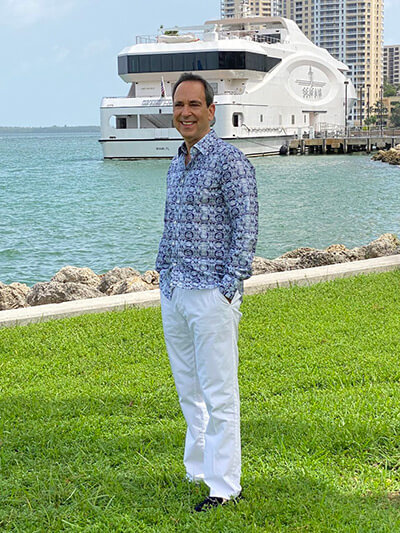Are Cruise Ships Responsible for Passenger Safety at Foreign Ports?
You purchase a cruise ship ticket expecting a fun filled vacation, with little worries. The marketing efforts of the cruise lines have stepped up over the years, with numerous commercials and brochures showing beautiful ports filled with a lot of fun-filled activities.
What happens at these ports as the passenger gets off the cruise ship and then walks down a gangway on to the land of the foreign port in order to enjoy this essential part of the cruise ship vacation? This article is just to touch upon a few areas I have encountered in representing passengers injured at foreign ports that might surprise you and raise some questions as to just how safe the cruise ship companies are making your experience. Are they doing enough or trying to disclaim liability if something happens once you get off the cruise ship to enter the port of call?
One situation of big concern for passengers is shoreside excursions. This is a situation where a passenger purchases a ticket to engage in some activity offered at the foreign country which is typically operated by a foreign company, not the cruise line itself. The sale of shoreside excursion is a major source of the income of the Billion Dollar cruise ship industry, and they spend millions marketing these excursion and actually selling the passengers the tickets. The cruise lines make enormous profits from the sale of these excursions.
What happens if you suffer an accident during one of these excursions?
The cruise line sold the ticket and advertised it was selected as a safe excursion for the passengers. The cruise lines makes all the arrangements. They represent the companies they choose are insured and have been vetted by the cruise lines. However, when a passenger learns the excursion was actually not safe, and an accident happens, the passenger often will not have any recourse against the cruise line that sold them the ticket.
What does the cruise line say when they are asked to take responsibility for the unsafe excursion they sold?
The story changes, a different tune is played for the passengers. The cruise line says the excursion companies are independent contractors for which they have no legal liability for when an accident happens to the cruise ship passenger. The passenger is often surprised as they believed it was cruise ship backed or operated excursion and that is why they purchased the excursion directly from the cruise line. However, the cruise line takes the position they are not liable for any accidents since the law is there is no legal liability for the negligence of an independent contractor.
To make matters worse, what the passengers are not told is after they buy the ticket from the cruise line, when they get to the excursion the excursion company will require the passenger to sign a written waiver of any liability for the excursion. This often leads to passengers scratching their heads as to who will accept liability for this unsafe excursion.
I have been handling these type of cases since 1983. Over the years, excursions have boomed as the cruise line industry has boomed, and the issues of liability for shoreside excursions is a hotly discussed topic and the law is not favorable for passengers.
The good news is there are some channels to navigate through that can lead to defeating the cruise line’s argument and result in legal liability on the part of cruise line. It is more the exception than the rule, but an experienced maritime lawyer can better navigate a passenger on the journey toward the destination of legal liability on the part of the cruise line.
Another issue that comes up at foreign ports involves the simple act of getting off the cruise ship to get to the excursion you bought or to simply explore the port on your own.
In a recent case against a major cruise line, the cruise ship stopped at one of the foreign ports that was part of the cruise. The port could not accommodate the large cruise ship docking at the port itself, so the ship had to anchor at sea and transport the passengers to the port. This required getting on a tender boat, which is a small boat. This boat took the passengers to the dock at the port, where the passengers then had to walk down a long gangway to step on the grounds of the port. This was the only means to exist the cruise ship to get to the scheduled port. While descending the gangway, it was raining heavily. The gangway was metal, no anti-skid strips, and was at a steep angle. It was very slippery and dangerous. As a result, despite the passenger walking slowly and holding onto a handrail, and wearing sneakers, the gangway was so slick she suddenly slipped badly and suffered very severe injuries. An engineer was hired to examine the gangway and determined there were several safety violations. Despite the many safety standards and precautions to take that were well known for such metal gangways, the cruise line failed to provide a safe exit for their passengers.
The cruise ship passenger then brought a claim against the cruise line for failure to provide a safe means to exist the vessel to get to the port of call. This is a non-delegable duty under the law, meaning the cruise line MUST provide safe methods to get on and off the vessel at each and every port, and cannot assign that duty to someone else. It is the cruise ship’s duty.
What are the cruise lines defenses?
In addition to the typical defense of blaming the incident on the passenger, the cruise line added a defense saying the gangway was not owned by them. This argument suggests the cruise line doesn’t care if it is unsafe or dangerous, they are saying they had no duty to do anything because it was the port’s gangway. Fortunately, this defense is not valid because the cruise line has obligations to make sure the means of getting off and on the ship are safe, and the cruise lines should have taken actions and precautions at this spot where they regularly visited. They knew there were not anti-skid strips, they knew metal gangways get slippery when wet, they knew it was raining heavily, and they failed to take required safety precautions.
The point of these examples is it will likely surprise passengers to know that cruise lines attempt to limit any possible liability to events that actually happen on their ships, although fortunately the law does not go that fall. Of course, the subject of further attempts by cruise lines to limit any liability even for events that happen on the ship is for another article.
In conclusion, passengers need to be aware of safety issues associated with cruises and be aware of what might happen should an unfortunate accident occur, on the ship or at a port.


